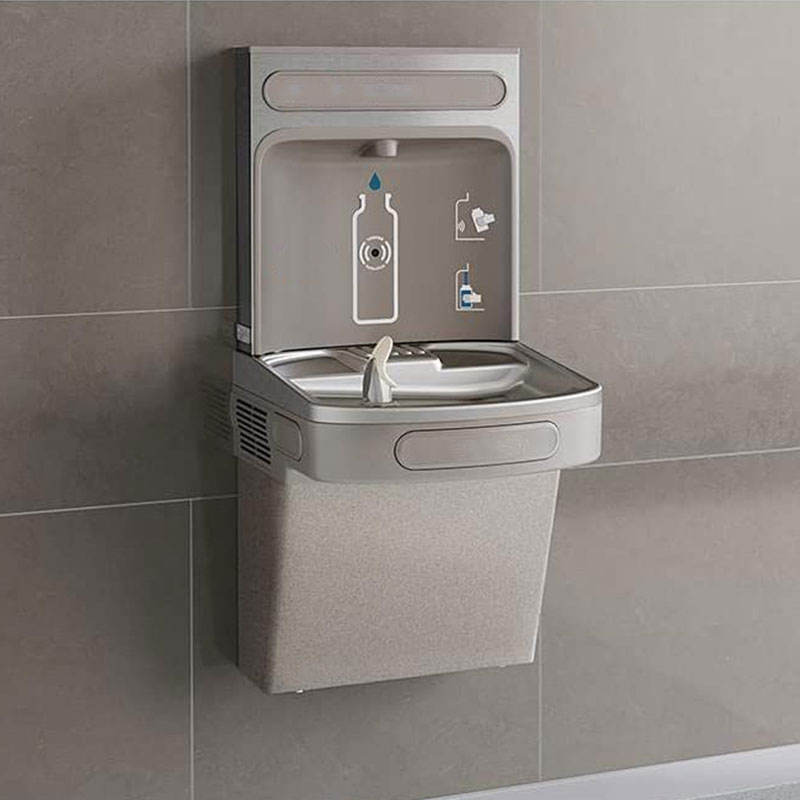 Hey pet parents! We obsess over premium food, vet visits, and cozy beds… but what about the water filling your furry friend’s bowl every single day? Tap water contaminants affecting you impact your pets too – often more intensely due to their size and biology. Filtering your pet’s water isn’t pampering; it’s proactive healthcare. Let’s dive into why it matters and how to choose the purr-fect solution!
Hey pet parents! We obsess over premium food, vet visits, and cozy beds… but what about the water filling your furry friend’s bowl every single day? Tap water contaminants affecting you impact your pets too – often more intensely due to their size and biology. Filtering your pet’s water isn’t pampering; it’s proactive healthcare. Let’s dive into why it matters and how to choose the purr-fect solution!
The Hidden Dangers in Fluffy’s Bowl:
- Chlorine & Chloramines: Harsh on sensitive noses and taste buds (discouraging drinking!), drying on skin/coats, and potential long-term irritants.
- Heavy Metals (Lead, Mercury): Accumulate in organs, causing neurological, kidney, and developmental issues. Pets are smaller = lower toxicity thresholds.
- Fluoride: High levels linked to bone issues in large breed dogs. Cats are especially sensitive.
- Nitrates/Nitrites: Can cause “blue baby syndrome” (methemoglobinemia) in pets, reducing oxygen in blood.
- Bacteria & Parasites (Giardia, Cryptosporidium): Cause severe gastrointestinal distress (“beaver fever”).
- Pharmaceuticals/Pesticides: Endocrine disruptors linked to cancers, thyroid issues, and reproductive problems.
- Sediment & Rust: Unpleasant taste/texture, potential GI upset.
- Hard Water Minerals: Contribute to urinary crystals/stones (HUGE risk for cats and some dogs).
Why Filtered Water is a Non-Negotiable for Pets:
- Encourages Hydration: Clean, fresh-tasting water entices pets to drink MORE. Crucial for kidney health, urinary tract function, digestion, and temperature regulation. Cats are especially prone to chronic dehydration.
- Reduces Urinary & Kidney Issues: Fewer minerals and contaminants = lower risk of painful (and expensive!) crystals, stones, and CKD progression.
- Supports Overall Vitality: Cleaner water means less toxic load on liver/kidneys, promoting a healthier immune system and shinier coat.
- Better Taste & Smell: Pets have keen senses. Removing chlorine/chemicals makes water more appealing.
- Peace of Mind: Know you’re providing the purest hydration possible.
Pet Water Filter Solutions: Beyond the Basic Bowl
| Filter Type | How It Works | Pros | Cons | Best For |
|---|---|---|---|---|
| Filtered Water Bowls | Built-in filter cartridge in reservoir. Gravity-fed. | Simple, affordable, portable, low-maintenance. | Small capacity, frequent filter changes (2-4 weeks), basic filtration (mostly carbon for taste/chlorine). | Single cats/small dogs, budget start, travel. |
| Pet Water Fountains | Recirculating water through filter(s). Plug-in or battery. | Encourages drinking! Moving water is instinctively appealing. Larger capacity. Multi-stage filtration (pre-filter + carbon). Constant aeration = fresher taste. | Requires cleaning (pump, tubing), needs power, higher cost, filter changes (2-8 weeks), can be noisy. | Cats (especially!), multiple pets, pets needing hydration encouragement. Top Choice! |
| Inline/Under-Sink Filters | Connects to sink’s cold water line. Dedicated pet tap or fill bowl. | Highest filtration quality (carbon block, RO options). Unlimited filtered water on-demand. Long filter life (6-12 months). | Higher upfront cost, requires installation, uses sink space. | Dedicated pet stations, multi-pet homes, pets with serious health conditions. |
| Pitcher/Pour-Through | Fill your standard pitcher filter, pour into pet bowl. | Leverages existing filter, simple. | Inconvenient (daily filling), risk of cross-contamination, pitcher not pet-specific. | Temporary solution, small pets. |
Key Features to Demand in a Pet Filter:
- Effective Filtration Media:
- Activated Carbon: Essential for chlorine, bad tastes/odors, VOCs, some pesticides.
- Ion Exchange Resin: Targets heavy metals (lead, copper) and reduces hardness minerals (calcium/magnesium).
- Mechanical Pre-Filter: Traps hair, debris, sediment – CRUCIAL for fountains!
- (Optional) Specialty Media: For nitrates, fluorides, or specific concerns (test your water!).
- Certifications: Look for NSF/ANSI Standards 42 (Aesthetic) & 53 (Health) relevant to pet concerns (chlorine, lead, cysts). Beware vague “reduces impurities” claims.
- Safety First:
- BPA-Free & Non-Toxic Materials: Ensure all plastics are food-grade.
- No Zinc Alloys: Common in cheap fountains – toxic if leached!
- Stable, Non-Slip Base: Prevents spills and tipping.
- Easy Cleaning: Fountains must be disassembled weekly! Look for dishwasher-safe parts (check manufacturer specs).
- Capacity & Flow: Match size to your pet(s). Fountains should have a strong, appealing flow.
- Filter Life & Cost: Factor in replacement frequency and cartridge price. Fountains often need more frequent changes than inline systems.
- Noise Level: Some fountains hum or gurgle. Check reviews if noise-sensitive pets (or humans!).
Pro Tips for Pristine Pet Hydration:
- Test Your Water: Know your specific contaminants to target the right filter.
- Wash Bowls/Reservoirs DAILY: Use hot soapy water. Biofilm grows fast!
- Deep Clean Fountains WEEKLY: Disassemble completely. Soak pump in vinegar/water. Scrub all parts. Rinse thoroughly. This is non-negotiable!
- Replace Filters ON SCHEDULE: Overused filters harbor bacteria and lose effectiveness.
- Place Multiple Stations: Especially in multi-pet homes or large houses. Cats prefer away from food/litter.
- Fresh Water Always: Top up bowls/fountains daily. Stagnant water = bad.
- Observe Your Pet: Increased drinking? Good! Avoiding the fountain? Check pump/filter/cleanliness.
The Bottom Line: An Investment in Furry Futures
Providing filtered water is one of the simplest, most impactful ways to safeguard your pet’s long-term health. It combats urinary diseases, encourages vital hydration, reduces toxin exposure, and offers pure refreshment they’ll love. Whether you choose a bubbly fountain or a sleek inline filter, you’re giving them the gift of wellness – one sip at a time.
What’s your pet’s hydration setup? Have you noticed a difference with filtered water? Share your experiences and tips in the comments below!
Post time: Jul-21-2025

